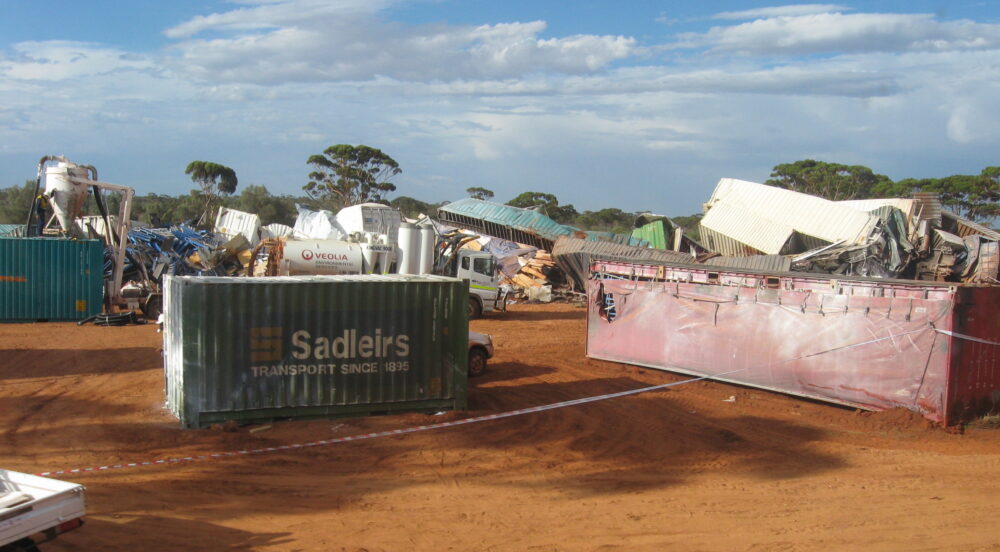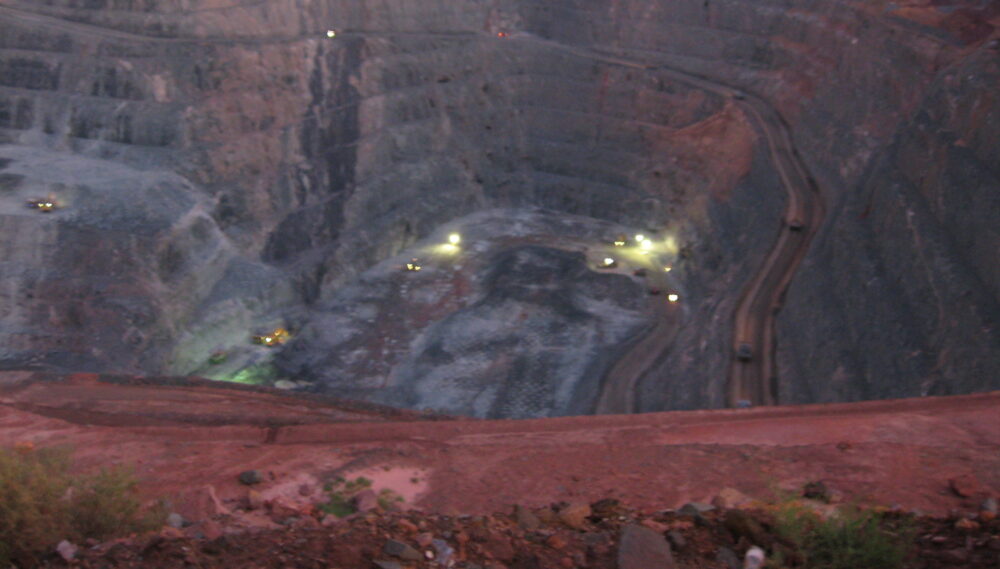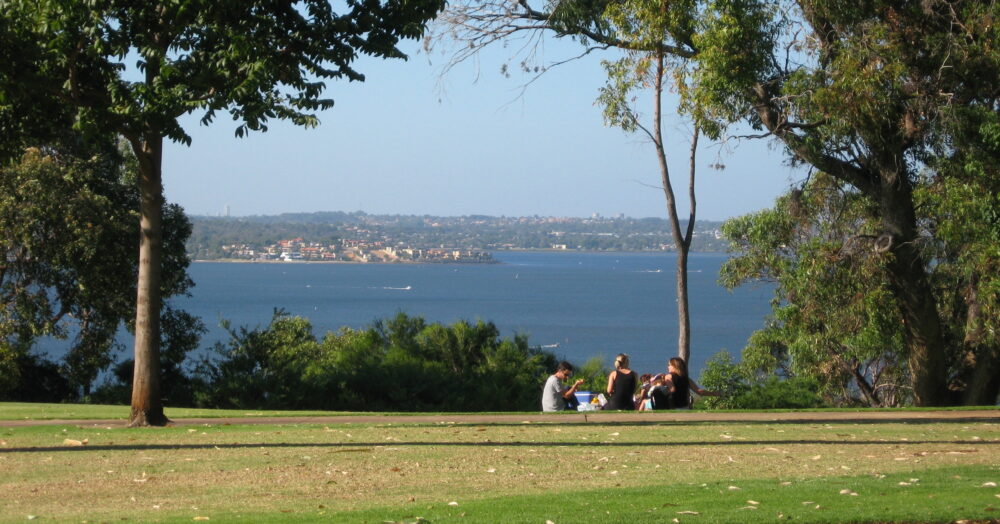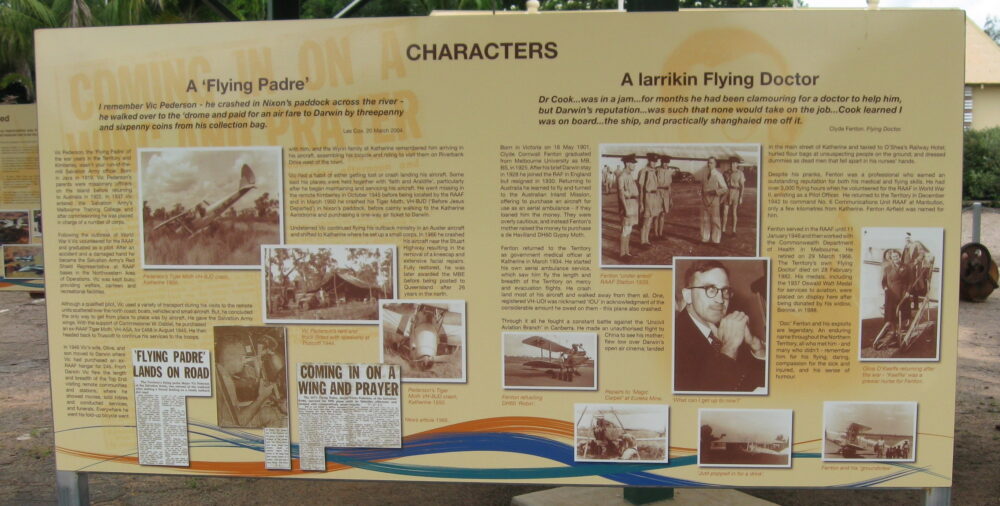Criss-crossing Australia by Train-2
Around noon on the third day, the Indian Pacific arrived at the site where a flash flood had washed away a section of track causing a freight train to derail several days earlier. In fact, I learned some time later that our train had almost been cancelled because of the rail cars and their contents obstructing the tracks.

Fortunately, the clean-up crews had cleared and repaired the tracks and we passed through the area of the wreck without incident, although at a very slow speed.
There was no doubt that this was the site of the recent train wreck: rail cars lying on their sides with contents scattered about. The Indian Pacific, running on SLOW, passed through the jumbled mess and resumed normal speeds. Later, I learned from a member of the crew that our train had almost been cancelled because of this wreck. Fortunately, the people in charge decided everything would be cleared away and the track inspected and pronounced “Safe” by the time we reached the location of the wreck.
Later that day, just as the sun was setting, the Indian Pacific stopped for a couple of hours at Kalgoorlie, a mining town and the passengers who were interested had a chance to visit the site of the largest open-pit gold mine in the world.

Those specks of light in the photo are, in reality, the headlights of huge trucks used to haul tons of ore from the one-mile-deep pit. After each truck-load of material, weighing many tons, is refined and processed, the yield in pure gold is about the size of a golf ball.

Welcomed in Perth
I’m not sure what it was about Perth, but I really liked that city. The air temperature in Perth was comfortable thanks to the breeze blowing in off the Indian Ocean. I spent the better part of a day strolling through the King’s Park, which has a great many very large, very old shade trees, each one planted by the families of Australian servicemen killed in either of the two World Wars.
Taking the Ghan
From Perth, I flew up to Darwin to take The Ghan on its two-night trip south to Adelaide.
It was pouring rain the day we departed from Darwin and headed south. Like the Indian Pacific, this train also made a couple of stops en route
If you are into train travel, I recommend either or, even better, both of these two long-distance luxury trains: The Indian Pacific, which runs east-west across the continent between Sydney and Perth in three nights; and The Gahn, which runs north-south between Darwin and Adelaide is a two night trip. Trains operate once a week in each direction and it makes two interesting stops along the way.

If, like me, you’re interested in railroading, you will notice that there are no wooden cross ties used by the railroad in Australia. This photo shows us the reason. Those brown stump-like objects are termite mounds and those hungry buggers would make short work of wooden cross ties (or “sleepers” as the Aussies call them.).

The first is at the town of Katherine, which has a small but interesting museum; the second is a beautifully preserved vintage airplane once flown by one of the “flying doctors”, who treated sick and injured people many miles out into the Outback.
What really caught my attention, however, was the Katherine School of the Air, with almost all of the 250-some students living many hundreds of miles away in the outback, but attending classes remotely thanks to modern-day computers and the internet.
I asked one of the teachers if the great variety of distances from the actual classroom didn’t make teaching difficult. “Only for Choir,” she said with a smile. (You have think about that for minute.)
The Ghan’s second stop was at Alice Springs and our timing was excellent because the annual regatta was being held . . . boats with wheels competing over a bone dry sandy course. Beer provided the moisture.
All things considered, this was one of my better trips and I enthusiastically recommend either or both of those two trains.
For more information and ticketing, email: publicrelations@journeybeyond.com.au.




Jim, I hope you and your wife are safe! You and everyone on Maui are in our prayers!
Reid Hawkins
Hi Reid. Many thanks. Yeah, we’re fine . . . except we’re pissed! See today’s post.
Jim, I hope you and your wife are safe from the wildfires. I’m devastated by the images coming from Lahaina.
Thanks … much appreciated!
Jim